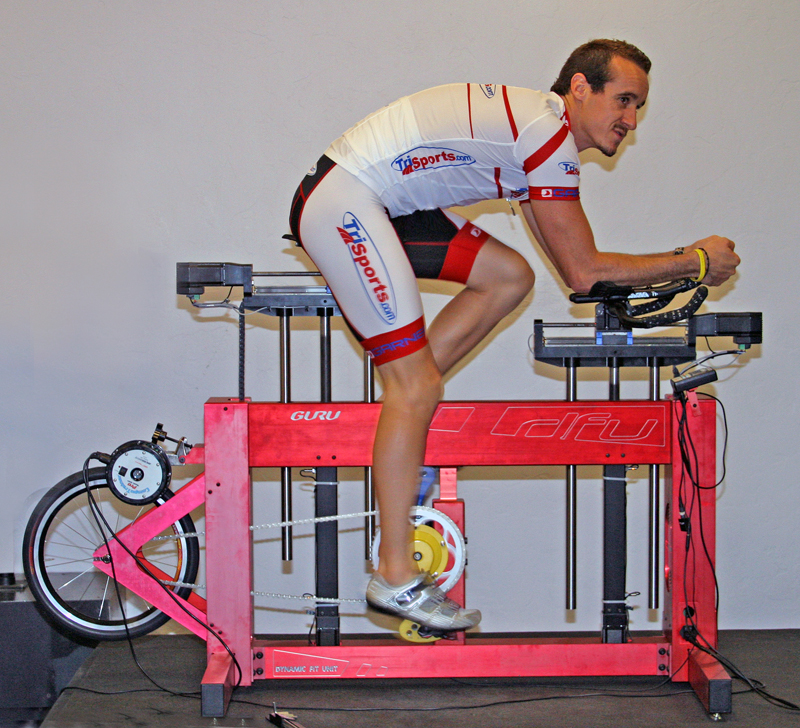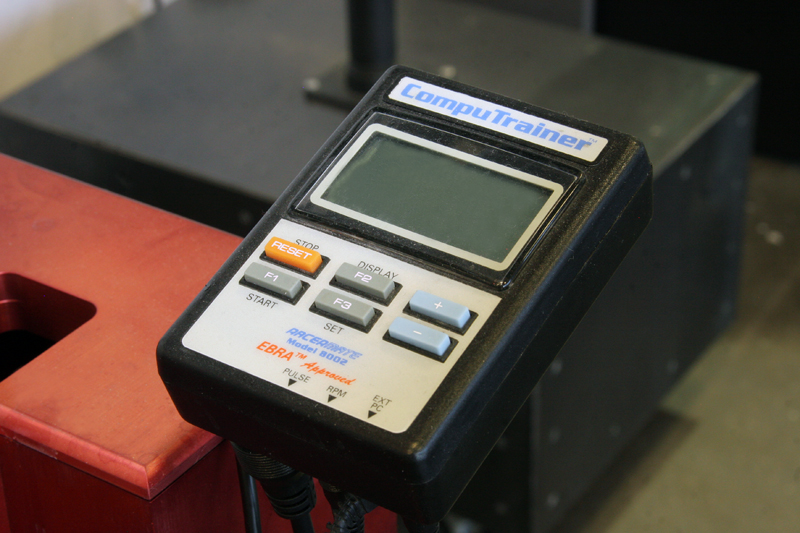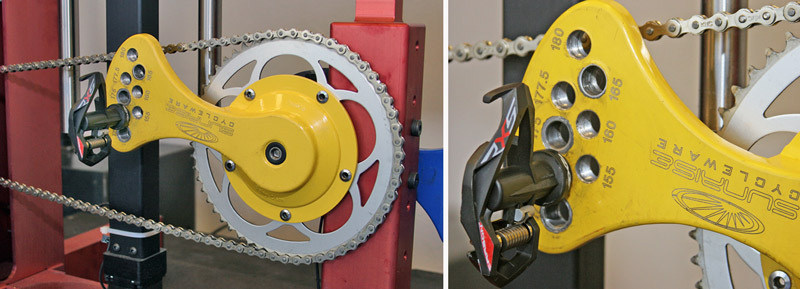By Tom Demerly.

“But how will it feel?”
It’s the most common question from a bike fit client considering a new bike- or a custom bike purchase. Customers want to know how a bike will feel before they buy it.
Why Test Rides Lie.
Test riding a bike is the least effective way to decide which bike to buy. When you ask customers about why they want to test ride a bike the answer is nearly universal: “I just want to see how it feels”.
“During a test ride a bike is not truly fitted to you.”
The majority of test rides are a quick 15-20 minute spin in street clothes and a borrowed helmet in the parking lot in front of the bike shop. The test ride does not represent the ownership experience. You aren’t using the pedal system, shoes, position, clothing, saddle and other rider-specific variables that you would actually use on a real ride. You may not even know the tire pressure. Most importantly the bike is not truly fitted to you. A 20 minute test ride won’t accurately predict how the bike will feel in the fourth hour of a five hour ride. A bike shop employee may estimate the saddle height, but it is little more than an educated guess.
For recreational bicycles like casual use mountain bikes, beach cruisers and light commuter bikes below $1500 a quick test spin may be an adequate evaluative tool. For a performance oriented road or triathlon bike you deserve more than a guess at saddle height and a quick spin to “see what it feels like”.

“But I wouldn’t buy a car without test driving it!” is one of the most common retorts to debunking the test ride. The argument does not transfer to buying an individually fitted bike. Whether a driver is 6’ tall or 5’4” they will test drive the same car. They will adjust the position of the seat and the steering wheel, but the same vehicle effectively “fits” both people- mostly because people don’t pedal cars. Within types of cars customers generally know if they need a sport utility, a passenger car or a pick-up.
On a road or triathlon bike there are at least 18 positional variables. The combination of different fit configurations within those 18 different fit-adjustable items is boggling. It is too much to test and keep track of with a casaul ride. A common phenomenon of new riders is that, the more bikes they test ride, the more they become confused. Buying a road or triathlon bike is different than buying a car– there are more variables and more opportunities to change the fit and position on a bike. Pedaling a bike is more dependent on fit and position than driving a car. The best tool in helping decide what bike to buy is your bike fitter.
“The best tool in helping decide what bike to buy is your bike fitter.”

A final argument some people make against taking the bike fitter’s advice is that the bike fitter is “only there to sell a bike”. If you are standing in a bike shop on a Saturday morning- it’s likely you are there to buy one. A good bike fitter gets you on the right bike, in the right positon and respects your time. While bike shopping is fun, most people don’t want to spend five hours in a bike shop on Saturday evaluating bikes without an orderly process with a beginning, middle and end. Good bike fitters know this.
The customer depends on the bike dealer to narrow the choices and make the one best recommendation based on fit, position and the rider’s needs. A good dealer maintains an inventory of bikes that fit short torso riders, long torso riders, tall riders, short riders, overweight riders and elite level racers. They know which bike will work for what body type and their fit process brings the two together. The best fitters aren’t afraid to turn a customer away if they find a “no fit” but, conversely, the best fitters have an inventory that will accommodate more than just the middle 60% of customers.
The Guru Dynamic Fit Unit.
The Guru Dynamic Fit Unit, or DFU, is a robotic position simulator with built in diagnostics for power output and rider efficiency. For the bike customer and the bike fitter it is one of the best tools in matching optimal bike to customer.

Guru developed the DFU after two years of testing. The device, combined with the CompuTrainer, combines the relevant diagnostics for racing bicycles across the entire envelope- from climbing a 10% grade at 5 M.P.H. to going flat out at over 25 M.P.H. This testing transcends what wind tunnels can tell us about a rider’s position because it tests efficiency down to the lowest cycling speeds. In the hands of a skilled and experienced fitter this test apparatus tells us what position and bike geometry will provide the most performance from a rider’s physiological capabilities. The Guru DFU and a skilled fitter does what no test ride can do. It uses data to create the best bike in a virtual setting. Guru frame builders move that design from the virtual space to the real world.
“The Guru DFU tells us what position and bike geometry will provide the most performance from a rider’s capabilities- across the entire performance envelope.”
While adjustable fit bikes have been around for some time the Guru DFU is currently the only automated fit bike that enables the fitter to change the position in as little as 1 mm increments while the rider is pedaling. The rider does not have to dismount. Different configurations can be saved in detail in the software for better/best comparison in only a few seconds and with the press of a mouse button.
In addition to understanding how different positions “feel” the Guru DFU uses the CompuTrainer to provide terrain simulation and a graphic representation of force vectors throughout the pedal stroke. Combined with heart rate and power output numbers the data stream can be converged to show the most power output with lowest heart rate by manipulating the DFU bike position under the rider and observing the data. While a wind tunnel only tests for aerodynamic drag a DFU tests for the optimal combination of rider efficiency whether you are climbing at low speeds or going flat out into a headwind.

When the DFU was introduced Serotta had also shown an automated/robotic position simulator. There was a brief intellectual property dispute between Guru and at least one other fit bike vendor- possibly Serotta. The result was Guru emerging with the DFU and no other similar, powered, remotely operated apparatus in the marketplace. Several other position simulators resemble the DFU, but they are not motor driven or computer controlled.

Fit components such as saddle, handlebars and aerobars on the DFU can be changed quickly using quick release stems and seat clamps. The rider can try various saddles and cockpits quickly, switching back and forth for comparison both using the data stream on the CompuTrainer read out, and from feel. All the data is stored in data fields on Guru’s DFU software.

The Guru DFU interfaces with Guru’s frame building capabilities by supplying a set of parameters to the builder for optimal rider position. The builder uses what Guru has learned about frame construction and geometry to integrate the DFU fit data into the frame design. The result is a precisely fitted bike built in a rapid-prototyping, virtual space but with the actual physiological input from the rider. It is more precise, empirical and provides greater capabilities than any other bike fit, position and diagnostic tool.
The Guru DFU requires an experienced bike fitter who understands fit principles such as those taught by Dan Empfield’s Fit Institute of Slowtwitch or “F.I.S.T.”. An experienced fitter knows what direction to take a rider to improve their comfort, safety and performance on the bike by interpreting the data provided by the Guru DFU to design a custom Guru bike. Given an experienced bike fitter using a proven process who knows bike fit the DFU may be the most powerful tool to merge data into bike design.


